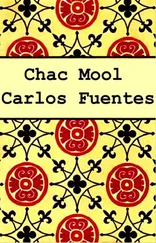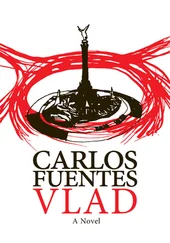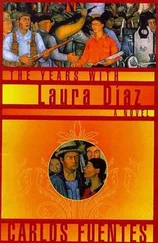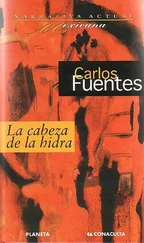Indeed, Gogol, from his very first book, was classified by a certain (universally unavoidable) type of book reviewer as inferior to Paul de Kock, possessed of a vulgar and incorrect language destined to be read only by an inferior sort of audience. Yet Gogol never renounced his belief, proclaimed yet again in a letter addressed to the critic and future memoirist Sergei Aksakov in 1840: “Few undoubtedly know to what vigorous ideas and profound images an insignificant theme can lead…”
Gogol’s so-called poor theme was indispensable to his literary strategy, which attempted to call attention both to the false reality we take to be true and to another reality, less fragmented and decomposed than “everyday reality,” which hides behind it. How to achieve this without establishing, first of all, a point of tension in banality itself, within the “realistic” comedy of bureaucrats, landowners, rogues, misers, provincial governors, eligible young women, and gossipy matrons? What Gogol had achieved wasn’t lost on Aksakov, and in a letter the critic wrote to his son Ivan in 1850, two years before Gogol’s death, he initiates a just evaluation when he states: “An art as lofty, consisting in showing a sublime aspect in the most vulgar individual: this one can only find in Homer. Today, only Gogol can do it.”
The metamorphosis, the strangeness of language and action in tension with its lowly theme, supposedly vulgar and despicable, place Gogol’s thematic world, as it serves his strategy of indirect restructuring of an atomized reality. But immediately the Gogolian universe, thus established, is blown apart by the motion of displacement.
VI
Metamorphosis is Gogol’s first avenue (or perspective) toward the reconstitution of reality. From it we look out on the parks, buildings, and sewers of a language, a style, a set of situations that pull us out of our own complacency through successive thrusts of strangeness. This grand avenue flows into a circular plaza: the circle of identity. But hardly have we gazed upon this central place of Gogol’s thematics when we are tempted by the openings toward other avenues (or perspectives) which distract us, remove us from the rotunda of identity, and postpone the possibility of certifying it.
These tempting perspectives are called displacement, trip, fugue, and they constitute the second grand Gogolian theme, after that of metamorphosis, which Donald Fanger has proposed. Displacement provides the dynamism for all the elements we have been considering until now: metamorphosis, estrangement, the poor theme, life in the work.
If metamorphosis is the (initial) process of fiction in Gogol, the road, writes Fanger, is its central image. When we sketched the life of the Gogolian character we call Gogol, we could already perceive that the voyage is seen as an absolute necessity, salvation and medicine not only for his hypochondriac body but for his creation. The displaced one, in this sense, is not only Gogol the biographical man but, above all, Gogol the textual man. Displacement achieves all of its meanings in Gogol.
First, it means flight from Russia. There is a troika on permanent call in Gogol’s soul, and its purpose is to carry him away from Russia. Perhaps the most Russian of all literary works is Dead Souls. It was written in Rome because, as Gogol says, “the contemporary author, the comic author, the portrayer of mores, must be as far as possible from his country. The prophet finds no honor in his homeland.”
When he quits Russia in June 1836, he insists that his thoughts, his name, and his works “shall belong to Russia,” but he, his perishable part, “shall be far away.” After all, he adds, “I really do have a Russian heart.” He would like to travel again in a Russian train and listen to the “Babylonic speech” of the passengers; he even feels nostalgia for the humidity, the fog, the chill of St. Petersburg. But his nostalgia, after all, depends on his absence, and from afar he also fears that returning to Russia would mean a renewal of his anger toward his beloved fatherland. The complexity of Gogol’s feelings toward Russia is transparent in a letter written from Lake Geneva in 1836. To all the previous reasons, he adds this one: abroad, he feels that his “indignation” toward all things Russian weakens; he then fears he shall lose his anger, “the anger without which … little can be said; only in anger can one say the truth.”
Gogol has implicitly explained that he would give his kingdom for a troika that would keep him perpetually poised, rhythmically, between farness and nearness. This horizontal, lyrical space — space proper to Russia — is imagined only through displacement. The author accompanies this statement with a spectacular use of modifying clauses: space in Russia disappears from sight, but Gogol’s prose qualifies it and limits its very boundlessness with a necklace of reticence, of “inclusive” and “it would seem,” “sort of,” “somehow.” For Andrei Bely these limiting expressions “throw a veil of immovable spots” on the narrative. Suffice it to remember the first chapter of Dead Souls, where the governor is described: “like Chichikov, neither fat nor thin; he was, nevertheless, a man of good disposition and even knitted silk stockings.”
Here the verbal qualification of what might be an extensive character limits Gogol’s comedy, places him within a finite space, and displaces him within the Russian immensity. I reflect that the Latin American novel, from Rivera’s La Vorágine and Gallegos’s Canaima to Carpentier’s Los Pasos Perdidos and Guimaräes Rosa’s Gran Sertāo: Veredas, has walked a (tropical) path as hazardous as this Russian steppe, in order to limit the extension of a nature that had already seemed superhuman to the discoverers of the sixteenth century. “They were swallowed by the jungle,” José Eustasio Rivera dramatically declares at the end of La Vorágine. “Don’t let them be swallowed by the steppe,” Nikolai Gogol comically says throughout Dead Souls.
Yet this struggle against pure extension, qualified and modified rather than denied, constitutes another form of displacement, and this is the up/down and down/up movement which forms an (orthodox) cross with space and confers its ironic dynamism (and, perhaps, its internal thickness) upon Gogol’s narrative.
An example comes to mind: the structure of that short-story masterpiece “The Overcoat,” where all things are distributed according to displacements of the vertical kind — floor and heaven; inferior and superior ranks; darkness below and clarity above. The story of Akaky Akakyevich Bashmachkin first names itself through its protagonist: bashmak means shoe and Akaky Akakyevich is presented as a man who always “looks downward.” He has a low rank in the bureaucracy, he walks staring at his shoes, and he works looking down at official documents.
Night falls over the Russian capital. Akaky is the scion of a family obsessed with shoes and determined to change their soles several times a year. When Akaky’s fellow workers mock him, they shower him over the head with small pieces of paper like snowflakes. Akaky “possessed the knack of being under a window at the precise moment when all kinds of trash was being thrown out”; his hat, therefore (the top of him, in other words), is always decorated with melon and watermelon rinds. Akaky Akakyevich is always rained down upon, from above: he is a shoeman, a humiliated man.
The upward movement in “The Overcoat” begins when the poor clerk decides to exchange his old, useless overcoat, which one can almost see through, for a new one, in the same way that his family used to change the soles of their shoes. He goes up the stairs to the tailor Petrovich, thinking of the high price of a brand-new coat. He finds the tailor in bare feet; the tailor recommends that Akaky use his old coat to warm his own feet. Akaky saves: he walks on the points of his shoes so as not to wear out the soles.
Читать дальше












